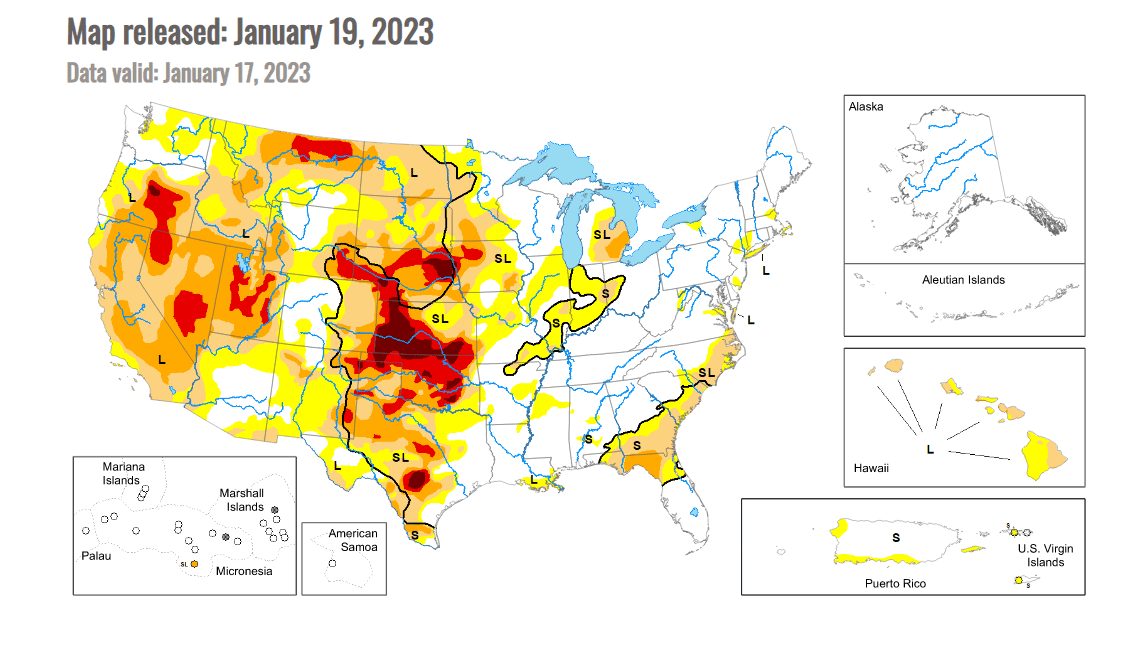January 20, 2023 – The latest drought map released yesterday from the U.S. Drought Monitor shows significant improvement in the southwest United States.
shows significant improvement in the southwest United States.
According to the Drought Monitor:
- A barrage of atmospheric river events – streams of moisture in the atmosphere that transport water vapor from the tropics – has reduced the drought intensity over the past few weeks. In California, 1-category improvements were made along the Northern Coast, around the Delta and along the South Coast region. While precipitation over much of the state was over 300% of normal over the previous 2 weeks (2 to 12.5 inches, depending on location), deficits have been years in the making. While this last round of rain has helped return smaller reservoirs to the historical averages, many of the larger reservoirs still remain below the historical average for this time of year. Historically, long-term drought is interrupted by a period of abnormally wet weather. However, it’s too early to tell if the wet weather is enough to end the drought.
- Heavy precipitation helped erase areas of abnormal dryness in parts of Washington, Oregon, western Wyoming, western Colorado, Arizona and New Mexico.
- The only places in the West seeing an expansion of drought were Oregon and Colorado. In Oregon, D1 was introduced in the south Willamette Valley and central Oregon Cascades and D1 and D2 expanded in the north-central part of the state. These expansions were in response to below-normal water-year-to date precipitation on top of longer-term deficits and groundwater impacts.
With smaller reservoirs filling and water seeping into the aquifers, there’s reason for hope. But as the Christian Science Monitor reports, the Colorado River basin states are not drought-free yet, writing:
reports, the Colorado River basin states are not drought-free yet, writing:
The atmospheric rivers stretched into Oregon and Washington state, and then moved east to the Rocky Mountains, where snow feeds the Colorado River. The Colorado River Basin provides water to 40 million people in seven states – Colorado, New Mexico, Utah, Wyoming, Nevada, Arizona, and California – and it’s running dangerously low. So low, those states have until Jan. 31 to come up with plans to reduce their water use, or the U.S. Bureau of Reclamation will step in and dictate the cuts. That deadline, and the need for states to drastically reduce their water use, have not been affected by the winter storms.
The Upper Basin has received more than 150% of median snowpack in some places. But “one wet season is not enough to fully resolve the river’s water issues,” said Erinann Saffell, state climatologist with the Arizona Department of Water Resources, via email.
More precipitation is coming, according to the Drought Monitor with is forecasting near-to slightly above normal precipitation from January 25 to the end of the month for most of the United States.
with is forecasting near-to slightly above normal precipitation from January 25 to the end of the month for most of the United States.


Leave a Reply